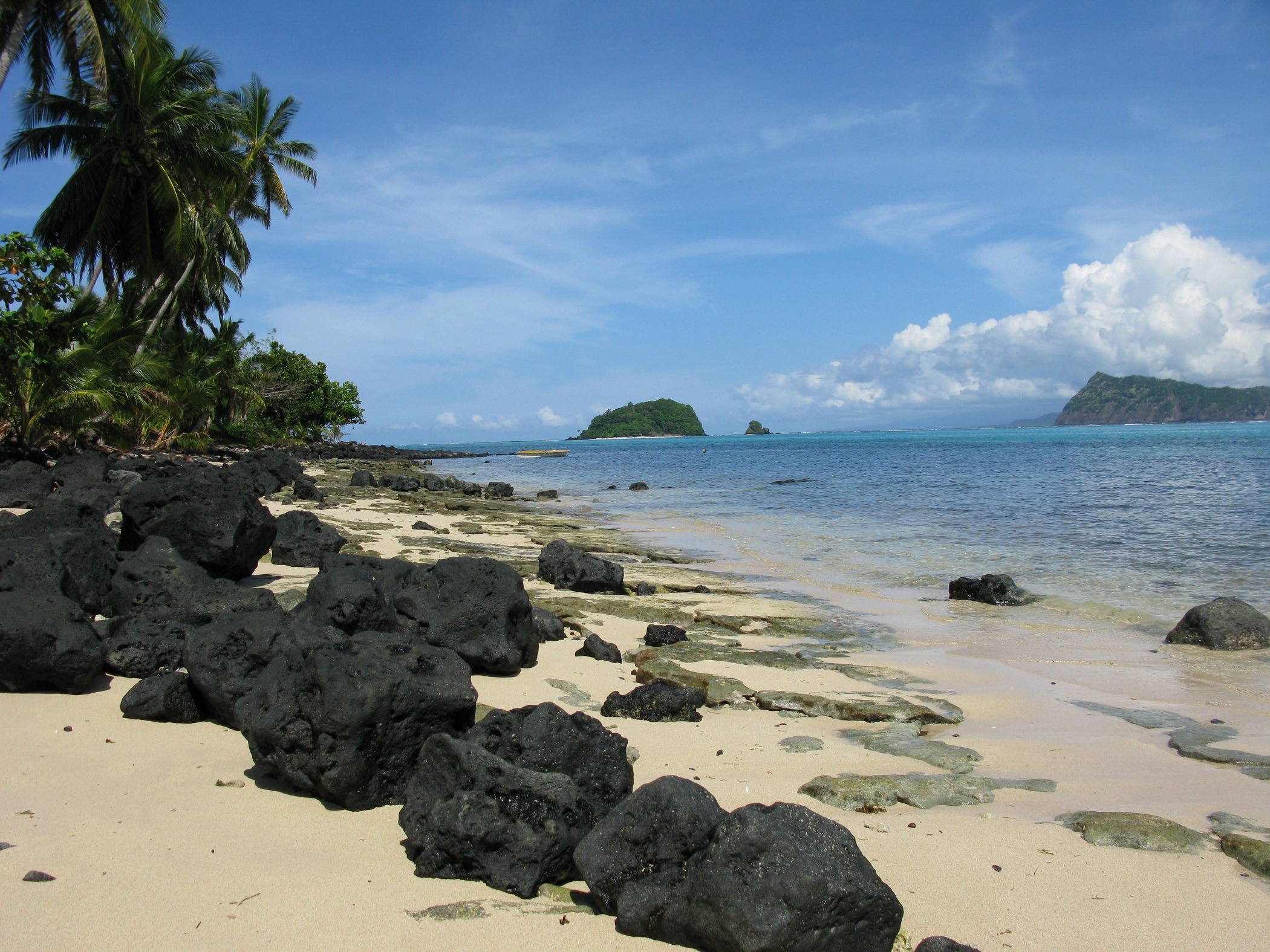Travel
The South Sea’s Sleepiest Island
Craig Tansley discovers an island to himself in Samoa where tourists rarely come, and cars never have.
December 14, 2019
Pacific Island Living
December 14, 2019Electricity only came to Manono in 2003 … cars haven’t made it across – though what’s the point on an island without any roads? I’m not sure why they bothered with electricity to be honest, when the sun sets the island slips into an early slumber; within a blackness us modern worlders know nothing about (you should see the stars shine with so few lights).
While this tiny island (it’s three square kilometres) is only a 20 minute boat ride from Samoa’s most populated island, Upolu, it has me travelling back at least a couple of hundred years in time.
There’s a walking track that goes around the entire island, each morning I like to walk it to take in all the detail of my tiny world; villagers call out greetings from their fales, and children have taken to following me around. After two days I know them all, it’s not hard on an island with so few tourists – we tend to stick out. The track takes about 90 minutes to walk, but then, I never make it the whole way round without stopping. There are four fishing villages along the way and I stop and talk to locals, and the walk to Manono’s interior and its highest peak takes you by archeological sites; and the section along the northern edge of the track has the best beaches on the island.

I swim here, taking in the views of the island of Apolima next door, it has even less people living on it (there are barely 75 there, compared to 900 on Manono). Life seems simple here on Manono; when locals aren’t cleaning to keep their island spotless, they sleep a lot; siestas aren’t just afternoon occasions to escape the heat, they’re taken at the slightest of impulses – in fact, it’s not unusual to see a whole village napping by the side of the track. When they’re vertical, not horizontal, locals tend farming plots, or fish the lagoon or hang clothes out to dry on lines hung between coconut trees. Their children, meanwhile, move with a frenetic energy their parents once had, and I see every game I eve rplayed from my own 70s and 80s Polynesian childhood played out here still – hopscotch, marbles, British bulldog etc.
In the evenings as the sun sets across the lagoon, I make my way to Manono’s only proper store for a warm Vailima (Samoan beer). They’ve had electricity for 16 years but locals seem to prefer to drink it warm. It’s this time of the day I look forward to most on Manono. I walk around the village observing everything as life plays itself out. Extended families sit out by the one walking track and gossip and giggle while their kids play brutal games of rugby that end with grass burns that bleed. Out on the horizon, storms thrash about, but the rain and lightning never quite make it to Manono.
There’s only a few accommodation choices on Manono and they’re basic at best. Each morning at mine – Sunset View Fales – I’m woken at 8.15 by the owner blowing into a conch shell. The views from my front porch high above the lagoon amongst fruit trees are the first thing I see.
This week I’m the only palangi (foreigner) here. After three days I begin to wonder if I’m the only palangi left on Earth. I like feeling that way; just a few kilometres away on Upolu’s more developed southern coast, there are plenty of tourists sleeping in air-conditioned villas, having massages and playing golf, but on Manono I don’t have to share Samoa with another foreigner.
Samoa can be different things to all kinds of visitors. Adventurists have got diving, and waterfalls to leap from, and world-class waves to surf and mountainous hinterlands to explore, culture lovers can see Polynesia the way it’s always been in traditional villages ruled by paramount chiefs; but here non Manono the experience is all about being a hermit, you can live out the wildest Robinson Crusoe fantasies on an island few tourists seem to know about.
The lagoon here is as good as it gets in the South Pacific, I take boat rides on it and circle the island; though some days I prefer just to swim out as far as I can from the shore and watch the fish swim beneath me. I intend to read the books I’ve been saving for this sort of solitude, but there’s always something better to look at on Manono than words.
And when I leave, I can’t believe this island’s only 20 minutes by speedboat across the water. It’s not like there’s traffic when I land at Manono-Uta on the west coast of Upolu, but there are cars … so I must be back in the 21st Century.
More: www.samoa.travel/page/manono-island-in-samoa
Washing hung out between coconut trees.
© 2024 Pacific Island Living Magazine all Rights Reserved
Website by Power Marketing